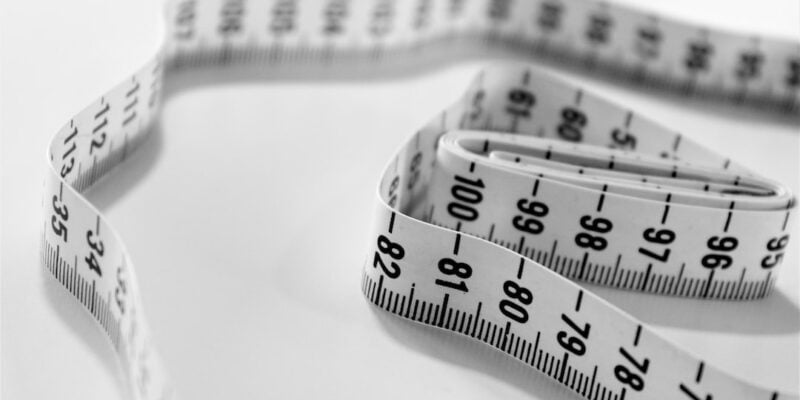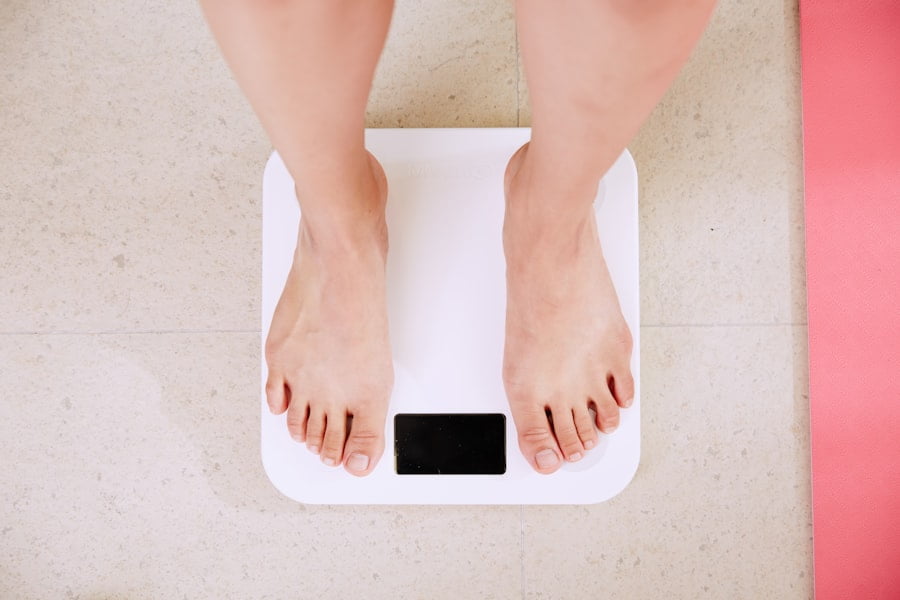
Shedding Pounds with Success: The Ultimate Guide to the Keto Diet for Weight Loss
The ketogenic diet, or keto diet for short, has gained significant popularity in recent years as a weight loss strategy. This low-carb, high-fat diet is designed to put the body into a state of ketosis, where it burns fat for fuel instead of carbohydrates. By drastically reducing carbohydrate intake and increasing fat consumption, the Keto Diet aims to help individuals shed pounds and achieve their weight loss goals.
Key Takeaways
- The Keto Diet is a low-carb, high-fat diet that can aid in weight loss.
- The diet works by putting your body into a state of ketosis, where it burns fat for energy instead of carbohydrates.
- Benefits of the Keto Diet include weight loss, improved blood sugar control, and increased energy levels.
- To get started on the Keto Diet, you’ll need to calculate your daily macronutrient intake and gradually reduce your carbohydrate intake.
- Foods to eat on the Keto Diet include meat, fish, eggs, low-carb vegetables, and healthy fats, while foods to avoid include grains, sugars, and processed foods.
The Science Behind the Keto Diet: How It Works for Shedding Pounds
The key principle behind the keto diet is to shift the body’s primary source of fuel from carbohydrates to fats. Normally, when we consume carbohydrates, our bodies break them down into glucose, which is then used as energy. However, when carbohydrate intake is restricted, the body begins to burn stored fat for energy instead.
When following a keto diet, carbohydrate intake is typically limited to around 20-50 grams per day. This forces the body to enter a state of ketosis, where it produces ketones from fat stores to use as fuel. Ketones are produced in the liver and are an alternative energy source for the brain and muscles.
In addition to promoting fat burning, the keto diet also helps regulate insulin levels. Insulin is a hormone that is released in response to carbohydrate consumption and is responsible for regulating blood sugar levels. When insulin levels are high, it signals the body to store excess glucose as fat. By reducing carbohydrate intake and keeping insulin levels low, the keto diet can help prevent weight gain and promote fat loss.
Benefits of the Keto Diet for Weight Loss: What You Can Expect
The keto diet offers several potential benefits for weight loss. One of the most significant advantages is its ability to promote rapid weight loss in the initial stages. When the body enters ketosis and starts burning fat for fuel, individuals often experience a significant drop in water weight due to the depletion of glycogen stores. This can result in a noticeable reduction in bloating and a slimmer appearance.
In addition to weight loss, the keto diet has been shown to improve energy levels and mental clarity. When the body is in ketosis, it has a steady supply of fuel from fat stores, which can help prevent energy crashes and improve focus. Many individuals also report reduced inflammation and improved overall well-being when following a keto diet.
However, it is important to note that the keto diet may not be suitable for everyone. Some individuals may experience side effects such as fatigue, constipation, or nutrient deficiencies. It is also important to consult with a healthcare professional before starting the diet, especially if you have any underlying health conditions or are taking medication.
Getting Started on the Keto Diet: Step-by-Step Guide
| Step | Description |
|---|---|
| Step 1 | Calculate your daily calorie needs and macronutrient ratios |
| Step 2 | Eliminate high-carb foods from your diet, including grains, sugars, and most fruits |
| Step 3 | Increase your intake of healthy fats, such as avocados, nuts, and olive oil |
| Step 4 | Choose high-quality protein sources, such as grass-fed beef, wild-caught fish, and organic eggs |
| Step 5 | Track your food intake and adjust your macronutrient ratios as needed |
| Step 6 | Stay hydrated and replenish electrolytes with salt and potassium-rich foods |
| Step 7 | Be patient and give your body time to adapt to the new diet |
| Step 8 | Consult with a healthcare professional before starting the keto diet, especially if you have any underlying health conditions |
If you are interested in trying the keto diet for weight loss, it is important to ease into it gradually. Suddenly cutting out carbohydrates can be challenging for the body and may lead to unpleasant side effects such as the “keto flu.” To minimize these symptoms, it is recommended to gradually reduce carbohydrate intake over a period of several weeks.
To get started on the keto diet, begin by reducing your intake of high-carbohydrate foods such as bread, pasta, rice, and sugary snacks. Instead, focus on increasing your consumption of healthy fats such as avocados, nuts, seeds, and olive oil. It is also important to include an adequate amount of protein in your diet to support muscle growth and repair.
During the transition phase, you may experience symptoms such as fatigue, headaches, and irritability. These are normal and should subside within a few days as your body adjusts to using fat for fuel. It is important to stay hydrated and replenish electrolytes during this time to help alleviate these symptoms.
Foods to Eat on the Keto Diet: A Comprehensive List
When following the keto diet, it is important to focus on consuming foods that are low in carbohydrates and high in healthy fats. Here is a comprehensive list of keto-friendly foods:
– Meats: Beef, poultry, pork, lamb
– Fish and seafood: Salmon, trout, shrimp, crab
– Eggs: Whole eggs are an excellent source of protein and healthy fats
– Vegetables: Leafy greens, broccoli, cauliflower, zucchini
– Healthy fats: Avocado, olive oil, coconut oil, butter
– Nuts and seeds: Almonds, walnuts, chia seeds, flaxseeds
– Dairy products: Full-fat cheese, Greek yogurt, heavy cream
– Berries: Strawberries, blueberries, raspberries (in moderation)
– Sweeteners: Stevia, erythritol (in moderation)
It is important to note that portion sizes and macronutrient ratios are key factors in the success of the keto diet. Aim to consume around 70-75% of your daily calories from fat, 20-25% from protein, and 5-10% from carbohydrates. This will help ensure that your body stays in a state of ketosis and continues to burn fat for fuel.
Foods to Avoid on the Keto Diet: What to Eliminate from Your Diet

To achieve and maintain ketosis, it is important to avoid certain foods that are high in carbohydrates. Here is a list of foods to eliminate or minimize on the keto diet:
– Grains: Wheat, rice, oats, corn
– Legumes: Beans, lentils, chickpeas
– Sugary foods: Candy, soda, pastries
– Starchy vegetables: Potatoes, sweet potatoes
– High-carb fruits: Bananas, grapes, oranges
– Processed foods: Chips, cookies, crackers
While it may seem challenging to eliminate these foods from your diet, there are often keto-friendly substitutes available. For example, cauliflower rice can be used as a replacement for regular rice, and zucchini noodles can be used instead of pasta. It may take some experimentation and creativity in the kitchen, but there are plenty of delicious and satisfying options available on the keto diet.
Meal Planning for the Keto Diet: Tips and Tricks for Success
Meal planning is an essential component of success on the keto diet. By planning your meals in advance, you can ensure that you have keto-friendly options readily available and avoid making impulsive food choices that may derail your progress.
One strategy for meal planning on the keto diet is to batch cook. This involves preparing large quantities of food at once and portioning it out for future meals. For example, you could roast a whole chicken and use the leftovers for salads, stir-fries, or wraps throughout the week. This not only saves time but also helps prevent food waste.
Another tip for successful meal planning on the keto diet is to plan ahead for social events or dining out. Research the menu in advance and identify keto-friendly options or modifications that can be made. If necessary, bring your own keto-friendly dish to share with others.
While meal planning can be a helpful tool, it is important to remain flexible and adaptable. Life happens, and there may be times when you are unable to stick to your planned meals. In these situations, focus on making the best choices available to you and get back on track as soon as possible.
Incorporating Exercise into Your Keto Diet: Maximizing Results
Exercise is an important component of any weight loss program, including the keto diet. Regular physical activity not only helps burn calories but also improves cardiovascular health, builds muscle, and boosts mood.
When incorporating exercise into your keto diet, it is important to choose activities that you enjoy and that align with your fitness goals. Some individuals may prefer high-intensity interval training (HIIT), while others may prefer low-impact activities such as yoga or swimming. The key is to find activities that you look forward to and that you can sustain long-term.
It is also important to manage your energy levels when exercising on the keto diet. Since carbohydrates are limited, your body may take some time to adjust to using fat for fuel during workouts. Start with shorter, less intense workouts and gradually increase the duration and intensity as your body adapts.
Overcoming Common Challenges on the Keto Diet: How to Stay on Track
While the keto diet can be effective for weight loss, it is not without its challenges. One common challenge is social pressure and the temptation to indulge in high-carb foods at social gatherings or events. In these situations, it can be helpful to plan ahead and bring your own keto-friendly options or eat a small meal before attending.
Another challenge on the keto diet is dealing with cravings for high-carb foods. It is important to remember that cravings are often temporary and will pass with time. To help manage cravings, focus on consuming adequate protein and healthy fats, which can help keep you feeling satisfied and reduce cravings.
Staying motivated and on track with the keto diet can also be challenging, especially if you hit a weight loss plateau or experience slower progress than expected. It is important to set realistic goals and celebrate non-scale victories such as increased energy levels or improved mental clarity. Finding support from friends, family, or online communities can also be helpful in staying motivated and accountable.
Achieving Your Weight Loss Goals with the Keto Diet
In conclusion, the keto diet can be an effective strategy for weight loss when followed correctly. By reducing carbohydrate intake and increasing healthy fats, the body enters a state of ketosis where it burns fat for fuel. This can lead to rapid weight loss, improved energy levels, and reduced inflammation.
However, it is important to consult with a healthcare professional before starting the keto diet, especially if you have any underlying health conditions or are taking medication. It is also important to listen to your body throughout the process and make adjustments as needed. The keto diet may not be suitable for everyone, and it is important to find a weight loss strategy that works best for you.
FAQs
What is the Keto Diet?
The Keto Diet is a low-carb, high-fat diet that aims to put your body in a state of ketosis, where it burns fat for energy instead of carbohydrates.
How does the Keto Diet help with weight loss?
The Keto Diet helps with weight loss by reducing your intake of carbohydrates, which are the body’s primary source of energy. By limiting carbs, your body is forced to burn fat for energy, leading to weight loss.
What foods are allowed on the Keto Diet?
Foods allowed on the Keto Diet include meat, fish, eggs, dairy, nuts, seeds, low-carb vegetables, and healthy fats such as olive oil and avocado.
What foods should be avoided on the Keto Diet?
Foods to avoid on the Keto Diet include high-carb foods such as bread, pasta, rice, potatoes, and sugary foods like candy and soda.
Is the Keto Diet safe?
The Keto Diet is generally considered safe for most people, but it may not be suitable for everyone. It is important to consult with a healthcare professional before starting any new diet.
What are some potential side effects of the Keto Diet?
Some potential side effects of the Keto Diet include headaches, fatigue, constipation, and bad breath. These side effects are usually temporary and can be managed with proper hydration and nutrition.
How long does it take to see results on the Keto Diet?
Results on the Keto Diet vary from person to person, but many people report seeing weight loss results within the first few weeks of starting the diet.
Can the Keto Diet be maintained long-term?
The Keto Diet can be maintained long-term, but it requires a commitment to a low-carb, high-fat lifestyle. It is important to work with a healthcare professional to ensure that the diet is sustainable and healthy for your individual needs.


















